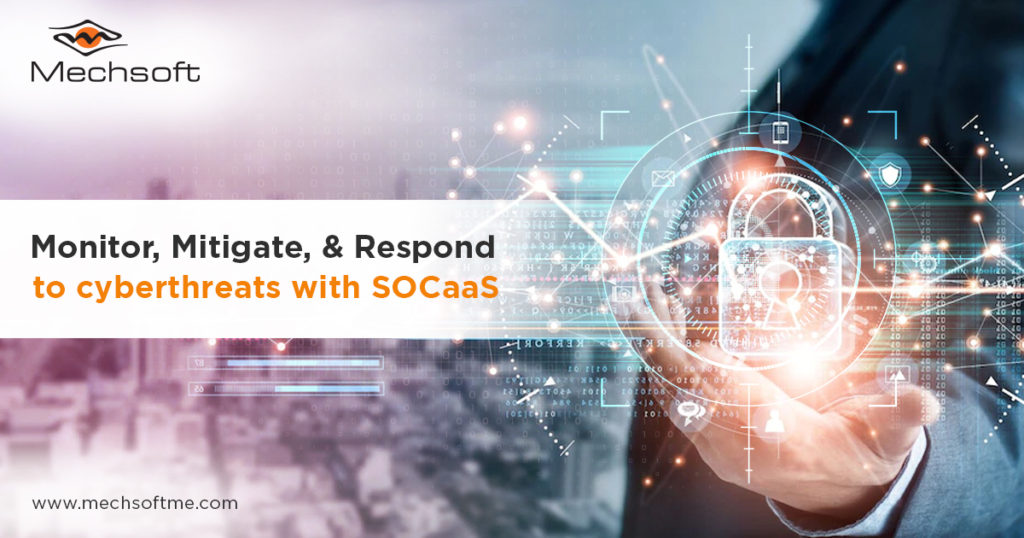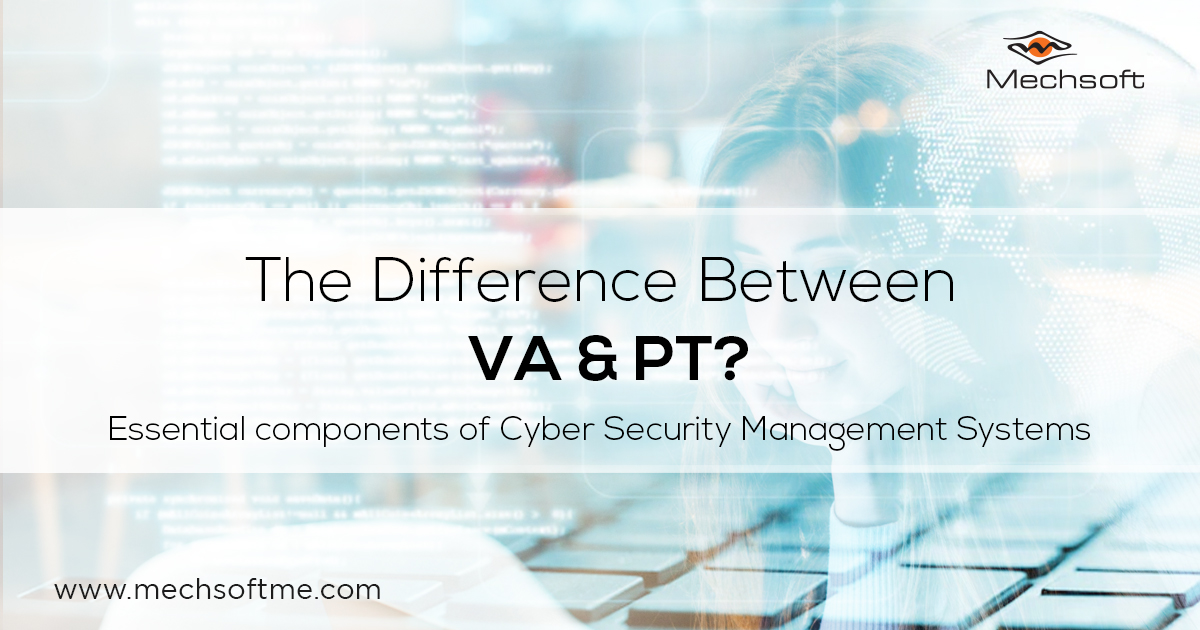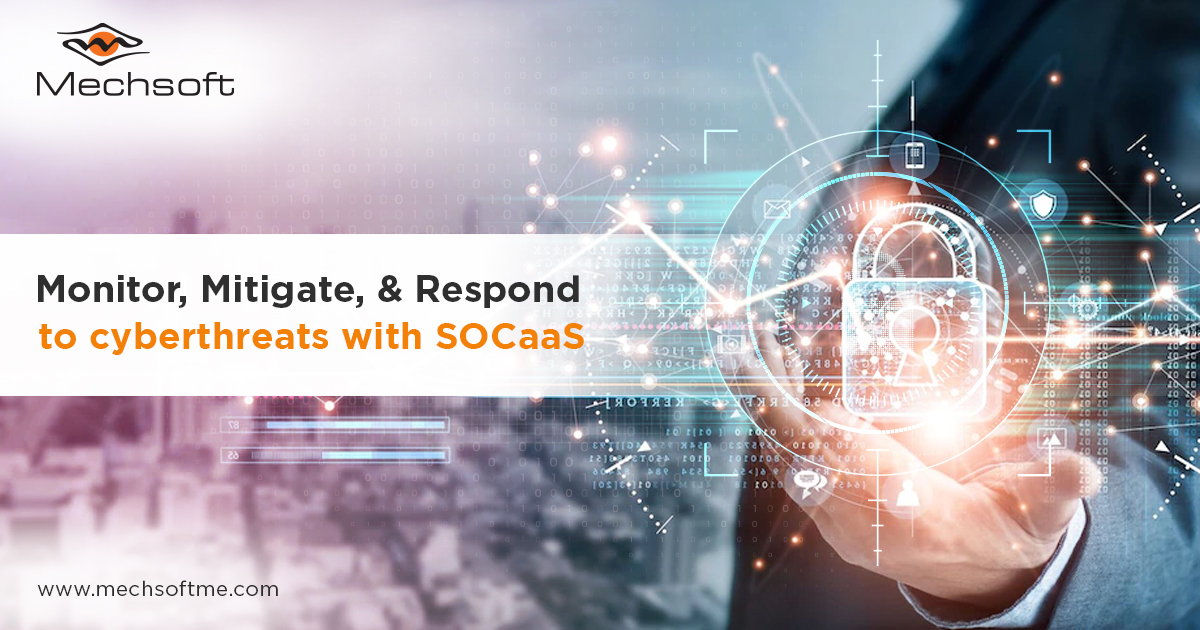Table of Contents
A Security Operations Center (SOC) is a command centre for Cybersecurity professionals in charge of monitoring and protecting a company from unwanted Cyber attacks. The SOC monitors internet traffic, servers, endpoint devices, applications, internal network infrastructure, and other systems for security incidents.
The SOC professionals collaborate with other departments but are typically self-contained and comprised of employees with exceptional Cybersecurity skills. A SOC can be built internally or outsourced entirely to third-party providers, including a leading SOC service provider.
How Does Security Operations Center Work?
The major aim of SOC is to monitor and alert the systems securely. The process includes data collection and analysis to detect suspicious activity and improve the organization’s security. Threat data is gathered from firewalls, prevention systems, SIEM systems, and threat intelligence.
Alerts are sent to SOC team members when discrepancies or other indicators are detected. The professionals incorporate the best security tools to eliminate threats and Cyber attacks.
Key Functions & Responsibilities Performed By the SOC
1. Take Stock of Available Resources
SOC is designed to protect two types of assets –
Devices, processes, and applications – SOC cannot protect devices and data they cant see. So the SOC’s goal is to gain a complete view of the business’ threat landscape, including not only the various types of endpoints, servers and software on premises, but also third-party services and traffic flowing between these assets.
Tools that ensure protection – SOC needs to have complete understanding of all cybersecurity tools on hand and all workflows in use within the SOC to increase the agility and to run at optimal performance.
2. Preparation and Preventative Maintenance
Even the best-equipped and agile response processes cannot prevent problems from occurring in the beginning. To prevent this, SOC incorporates the best practices to detect suspicious activities and prevent Cyber attacks.
Preparation – Team members stay informed of the latest security innovations, Cybercrime trends, and new threats. It enables the development of a security roadmap, offering direction for the company’s future Cybersecurity efforts and a disaster recovery plan.
Prevention – It encompasses all actions taken to make Cyber attacks more difficult. For instance, maintaining and updating existing systems, updating firewall policies, patching vulnerabilities, and more
3. Proactive Monitoring
The SOC’s security tools continuously scan the network for anomalies or suspicious activity. Monitoring the network around the clock allows the SOC to be notified of emerging threats immediately, giving them the best opportunity to prevent or mitigate harm.
Monitoring tools, such as a SIEM or an EDR, use behavioral analysis to “teach” systems the difference between normal day-to-day operations and actual threat behavior. Managed SOC services reduce the chances of threats and attacks.
4. Alert Ranking and Management
As monitoring tools generate alerts, SOC carefully examines each one to identify the severity and what they may be targeting and eliminate any false positives. This ensures that threats are effectively prioritized, addressing the most pressing concerns first.
5. Threat Response
As soon as an attack is identified, the SOC immediately isolates endpoints – shutting down or terminating all harmful processes like deleting files, and more. SOC is design to take immediate action to contain the attack with minimal impact on business continuity as possible.
6. Recovery & Remediation
The SOC will work to restore systems and recover any loss of data in the aftermath of an incident. The process incorporates wiping and restarting endpoints, ransomware attacks, reconfiguring systems, deploying viable backups, etc.
Timely Vulnerability Assessment & Penetration Testing would also be advisable for organizations to keep their systems away from data threats or Cyber attacks.
7. Log Management
SOC has always been a key component of an organization’s security. SOC collects and maintains the log of all network activity and communications. The SOC reviews the log on a regular basis to identify any potential threats or vulnerabilities that may exist in your network.
8. Root Cause Investigation
Determine and document the when, how, and why of an incident. Defined as a principle-based, systems approach for the identification of underlying causes associated with a particular set of risks, RCA (Root Cause Investigation) can also help your organization to identify other outlying factors that may have contributed to the success of a data breach.
9. Security Refinement & Improvement
Cybercriminals improve their tools and strategies to continue to stay ahead of them. Thus, the SOC as a service must apply continuous enhancements to keep the business systems safe and secure.
The ideas specified in the Security Road Map come to life during this step; however, this refinement can also involve hands-on techniques like red-teaming and purple-teaming.
10. Compliance Management
Quality standards direct many SOC’s processes, but compliance mandates drive others. The SOC is responsible for auditing its systems regularly to guarantee compliance with such requirements, which may be impose by its organization or regulating authorities.
Acting in compliance with standards like HIPPA or GDPR helps organizations protect the sensitive data with which the company has been entrusted and protects against reputational harm and legal problems resulting from a data breach.
Benefits of SOC As A Service for Organizations
Security Operations Center (SOC) plays a crucial role in an organization’s ability to sustain operations, remain profitable, and achieve and maintain compliance with applicable regulations.
But building and maintaining an internal Security Operation Center, that can achieve a high level of security maturity- can turn out to be costly and time-consuming.
Due to a lack of resources and expertise, not every company can build its own Security Operation Center. The underlying costs, hiring the right experts, and managing the technology stack can become overwhelming.
SOC as a Service is an attractive option for many companies because it eliminates the need to hire staff to monitor and defend their networks. The provider takes on these responsibilities, allowing the company to focus on its core business.
Benefits include-
- Monitor security 24/7 by using automation and data science to speed up detection and to deliver high-confidence alerts.
- Reduce the risk of a breach as well as the probability of incurring costs (legal fees, regulatory fines, customer service costs, etc.)
- Since businesses are growing and changing quickly, SOC-as-a-Service can alter, and scale as needed.
- More cost-effective than establishing and staffing an on-premises SOC.
Conclusion
With SOCaaS, businesses can monitor, mitigate, and respond to cyberthreats for a fraction of the cost of having a dedicated SOC in house. But selecting the right SOC-as-a-Service provider can be tedious and challenging. There are many things to consider, such as: size of business, type of business, business location, compliance needs, specific security requirements, and more. Connect with the experts at Mechsoft Technologies for a free of charge consultation and to get a clear overview of our SOC-as-a-Service.
Mechsoft Technologies is a premier cybersecurity solutions and services provider, dedicated to helping organizations protect its assets from both external as well as internal threats.



